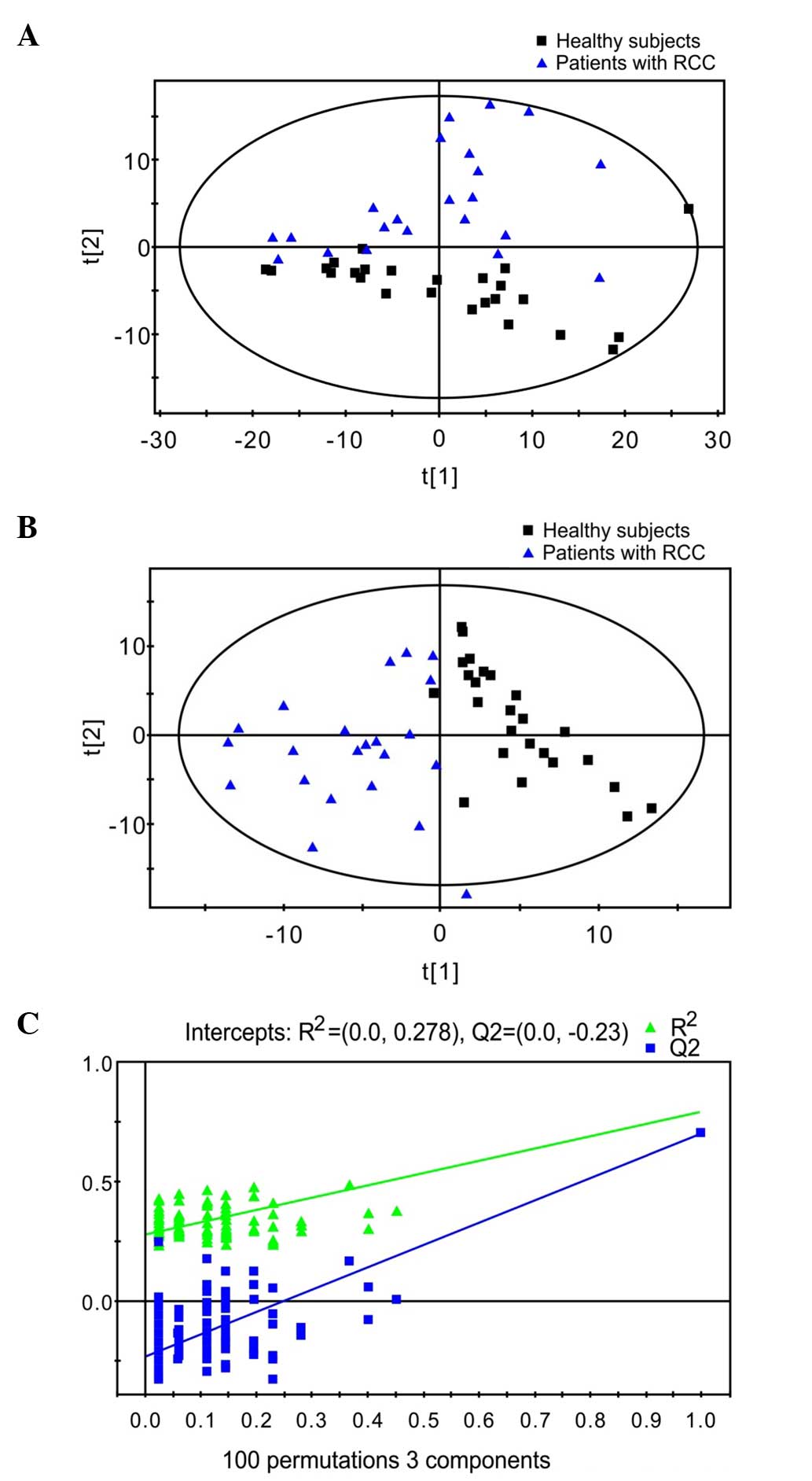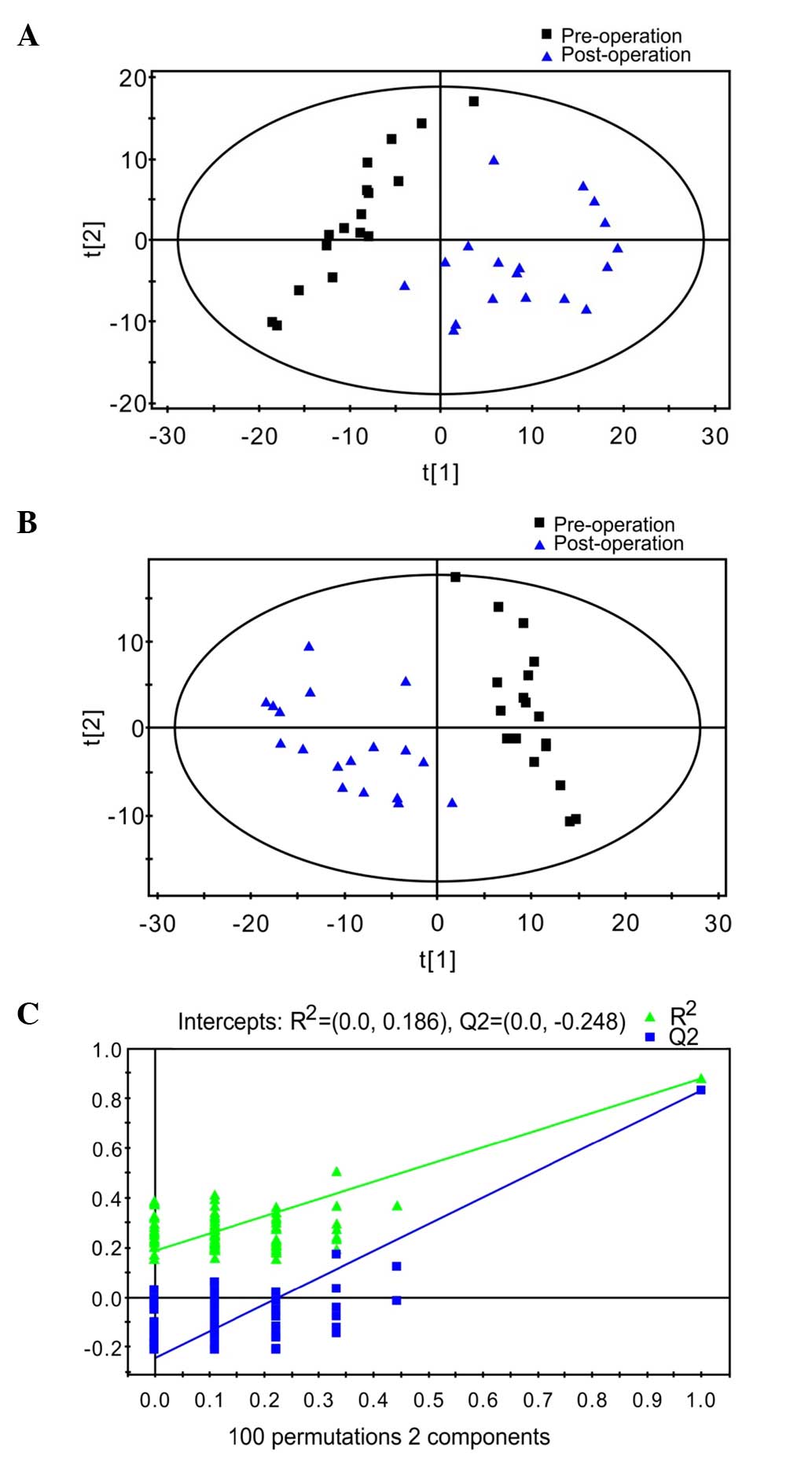|
1
|
Ferlay J, Shin HR, Bray F, Forman D,
Mathers C and Parkin DM: Estimates of worldwide burden of cancer in
2008: GLOBOCAN 2008. Int J Cancer. 127:2893–2917. 2010. View Article : Google Scholar : PubMed/NCBI
|
|
2
|
Rini BI, Campbell SC and Escudier B: Renal
cell carcinoma. Lancet. 373:1119–1132. 2009. View Article : Google Scholar : PubMed/NCBI
|
|
3
|
Guo HF, Song Y and Na YQ: Value of
abdominal ultrasound scan, CT and MRI for diagnosing inferior vena
cava tumour thrombus in renal cell carcinoma. Chin Med J (Engl).
122:2299–2302. 2009.PubMed/NCBI
|
|
4
|
Khan AR, Anwar K, Fatima N and Khan SF:
Comparison of CT scan and colour flow Doppler ultrasound in
detecting venous tumour thrombous in renal cell carcinoma. J Ayub
Med Coll Abbottabad. 20:47–50. 2008.PubMed/NCBI
|
|
5
|
Rendon RA, Kapoor A, Breau R, Leveridge M,
Feifer A, Black PC and So A: Surgical management of renal cell
carcinoma: Canadian Kidney Cancer Forum Consensus. Can Urol Assoc
J. 8:E398–E412. 2014. View Article : Google Scholar : PubMed/NCBI
|
|
6
|
Altomare DF, Di Lena M, Porcelli F, Trizio
L, Travaglio E, Tutino M, Dragonieri S, Memeo V and de Gennaro G:
Exhaled volatile organic compounds identify patients with
colorectal cancer. Br J Surg. 100:144–150. 2013. View Article : Google Scholar : PubMed/NCBI
|
|
7
|
Ikeda A, Nishiumi S, Shinohara M, Yoshie
T, Hatano N, Okuno T, Bamba T, Fukusaki E, Takenawa T, Azuma T, et
al: Serum metabolomics as a novel diagnostic approach for
gastrointestinal cancer. Biomed Chromatogr. 26:548–558. 2012.
View Article : Google Scholar : PubMed/NCBI
|
|
8
|
Wu H, Xue R, Dong L, Liu T, Deng C, Zeng H
and Shen X: Metabolomic profiling of human urine in hepatocellular
carcinoma patients using gas chromatography/mass spectrometry. Anal
Chim Acta. 648:98–104. 2009. View Article : Google Scholar : PubMed/NCBI
|
|
9
|
Filipiak W, Sponring A, Mikoviny T, Ager
C, Schubert J, Miekisch W, Amann A and Troppmair J: Release of
volatile organic compounds (VOCs) from the lung cancer cell line
CALU-1 in vitro. Cancer Cell Int. 8:172008. View Article : Google Scholar : PubMed/NCBI
|
|
10
|
Zambonin CG, Aresta A, Palmisano F,
Specchia G and Liso V: Liquid chromatographic determination of
urinary 5-methyl-2′-deoxycytidine and pseudouridine as potential
biological markers for leukaemia. J Pharm Biomed Anal.
21:1045–1051. 1999. View Article : Google Scholar : PubMed/NCBI
|
|
11
|
Sasco AJ, Rey F, Reynaud C, Bobin JY,
Clavel M and Niveleau A: Breast cancer prognostic significance of
some modified urinary nucleosides. Cancer Lett. 108:157–162. 1996.
View Article : Google Scholar : PubMed/NCBI
|
|
12
|
Zheng YF, Yang J, Zhao XJ, Feng B, Kong
HW, Chen YJ, Lv S, Zheng MH and Xu GW: Urinary nucleosides as
biological markers for patients with colorectal cancer. World J
Gastroenterol. 11:3871–3876. 2005. View Article : Google Scholar : PubMed/NCBI
|
|
13
|
Yang J, Xu G, Zheng Y, Kong H, Pang T, Lv
S and Yang Q: Diagnosis of liver cancer using HPLC-based
metabonomics avoiding false-positive result from hepatitis and
hepatocirrhosis diseases. J Chromatogr B Analyt Technol Biomed Life
Sci. 813:59–65. 2004. View Article : Google Scholar : PubMed/NCBI
|
|
14
|
Ganti S and Weiss RH: Urine metabolomics
for kidney cancer detection and biomarker discovery. Urol Oncol.
29:551–557. 2011. View Article : Google Scholar : PubMed/NCBI
|
|
15
|
Jobu K, Sun C, Yoshioka S, Yokota J,
Onogawa M, Kawada C, Inoue K, Shuin T, Sendo T and Miyamura M:
Metabolomics study on the biochemical profiles of odor elements in
urine of human with bladder cancer. Biol Pharm Bull. 35:639–642.
2012. View Article : Google Scholar : PubMed/NCBI
|
|
16
|
Phillips M, Cataneo RN, Cummin AR,
Gagliardi AJ, Gleeson K, Greenberg J, Maxfield RA and Rom WN:
Detection of lung cancer with volatile markers in the breath.
Chest. 123:2115–2123. 2003. View Article : Google Scholar : PubMed/NCBI
|
|
17
|
Hietanen E, Bartsch H, Béréziat JC, Camus
AM, McClinton S, Eremin O, Davidson L and Boyle P: Diet and
oxidative stress in breast, colon and prostate cancer patients: A
case-control study. Eur J Clin Nutr. 48:575–586. 1994.PubMed/NCBI
|
|
18
|
Wang C, Li P, Lian A, Sun B, Wang X, Guo
L, Chi C, Liu S, Zhao W, Luo S, et al: Blood volatile compounds as
biomarkers for colorectal cancer. Cancer Biol Ther. 15:200–206.
2014. View Article : Google Scholar : PubMed/NCBI
|
|
19
|
Alwis KU, Blount BC, Britt AS, Patel D and
Ashley DL: Simultaneous analysis of 28 urinary VOC metabolites
using ultra high performance liquid chromatography coupled with
electrospray ionization tandem mass spectrometry (UPLC-ESI/MSMS).
Anal Chim Acta. 750:152–160. 2012. View Article : Google Scholar : PubMed/NCBI
|
|
20
|
Nicolaides N: Skin lipids: Their
biochemical uniqueness. Science. 186:19–26. 1974. View Article : Google Scholar : PubMed/NCBI
|
|
21
|
Broza YY, Kremer R, Tisch U, Gevorkyan A,
Shiban A, Best LA and Haick H: A nanomaterial-based breath test for
short-term follow-up after lung tumor resection. Nanomedicine.
9:15–21. 2013.PubMed/NCBI
|
|
22
|
Gao H, Dong B, Liu X, Xuan H, Huang Y and
Lin D: Metabonomic profiling of renal cell carcinoma:
High-resolution proton nuclear magnetic resonance spectroscopy of
human serum with multivariate data analysis. Anal Chim Acta.
624:269–277. 2008. View Article : Google Scholar : PubMed/NCBI
|
|
23
|
Mochalski P, Krapf K, Ager C, Wiesenhofer
H, Agapiou A, Statheropoulos M, Fuchs D, Ellmerer E, Buszewski B
and Amann A: Temporal profiling of human urine VOCs and its
potential role under the ruins of collapsed buildings. Toxicol Mech
Methods. 22:502–511. 2012. View Article : Google Scholar : PubMed/NCBI
|
|
24
|
Wahl HG, Hong Q, Hildenbrand S, Risler T,
Luft D and Liebich H: 4-Heptanone is a metabolite of the
plasticizer di(2-ethylhexyl) phthalate (DEHP) in haemodialysis
patients. Nephrol Dial Transplant. 19:2576–2583. 2004. View Article : Google Scholar : PubMed/NCBI
|
|
25
|
Mochalski P, King J, Haas M, Unterkofler
K, Amann A and Mayer G: Blood and breath profiles of volatile
organic compounds in patients with end-stage renal disease. BMC
Nephrol. 15:432014. View Article : Google Scholar : PubMed/NCBI
|
|
26
|
Halliwell B, Gutteridge JM and Cross CE:
Free radicals, antioxidants, and human disease: Where are we now? J
Lab Clin Med. 119:598–620. 1992.PubMed/NCBI
|
|
27
|
Thompson-Torgerson CS, Champion HC,
Santhanam L, Harris ZL and Shoukas AA: Cyclohexanone contamination
from extracorporeal circuits impairs cardiovascular function. Am J
Physiol Heart Circ Physiol. 296:H1926–H1932. 2009. View Article : Google Scholar : PubMed/NCBI
|











